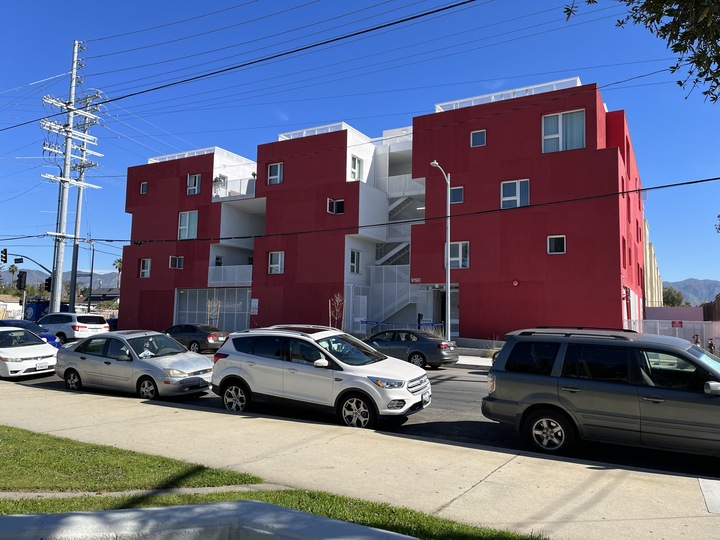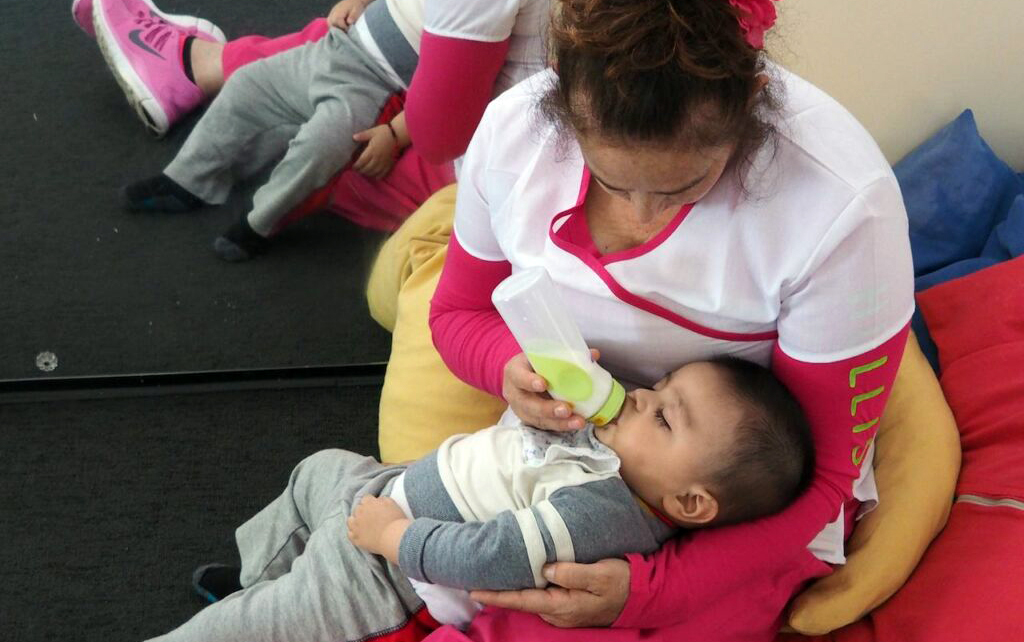
Sun Valley Apartments provide homes to LAUSD families that have experienced chronic homelessness.
Credit: Mallika Seshadri
Twenty-five units of permanent, supportive housing have been made available to families of LAUSD students who have experienced chronic homelessness.
After more than seven years of collaboration, district officials and partners — including Many Mansions, a nonprofit that provides affordable housing to Los Angeles County and Ventura County residents — cut the ribbon for the new Sun King Apartments on Monday and vowed this would be the first of many structures to come.
“I am filled with hope and determination to continue bringing housing opportunities to more LAUSD families in need,” said school board member Kelly Gonez on Monday. “Because while we’re not in the housing business, we are in the business of doing everything we can to advocate for our students and families.”
High rates of poverty “should not be the reality in the richest country on Earth, in the richest state in the nation, in one of the richest counties of this state,” district Superintendent Alberto Carvalho added.
The Sun King Apartments — consisting of one, two and three bedroom apartments — are located in L.A.’s San Fernando Valley, where Gonez said there are several elementary schools where more than 20% of students are homeless.
The apartments’ residents are supported through a voucher, and their rent is based on a sliding scale.
In addition to the housing, residents will have access to a range of youth services — including after-school tutoring, summer camps, family events and school supplies, according to Rick Schroeder, president and CEO of Many Mansions.
Several of the district’s partners and collaborators on the project attended Monday’s event, including U.S. Rep. Tony Cárdenas, City Council member Imelda Padilla and the city’s chief housing and homelessness officer, Lourdes Castro Ramirez, along with business partners.
‘Not stopping here’
Annika, Angel and their daughter, Faith, live in one of the Sun King Apartments.
The parents, whose last names were not provided, met at a homeless shelter 16 months ago.
In late December, they — along with their daughter, Faith — moved into the Sun King Apartments.
“We all started a new chapter of our lives, and it has filled us with the highest hopes, blessings and glory,” Annika said Monday. “With the thanks to Many Mansions, we have been able to create a safe and stable chapter of life and a new home for our daughter, Faith.”
Noting that homelessness among school-aged children has increased, Carvalho said Monday that similar projects to house members of the Los Angeles community are critical. He said the Sun King Apartments project is something “that we need to replicate and amplify very quickly.” The superintendent did not provide details or a timeline for when additional housing is expected.
This initial effort took more than seven years, but Carvalho hopes future projects will take less time.
So far, the district has put out a request for information for seven potential properties — some of which may also serve as workforce housing for teachers and classified personnel, Carvalho said.
He declined to share how many people the district is ultimately looking to house and said Los Angeles Unified School District would pursue options that do not cost them financially.
“How do you tackle (homelessness)? One unit at a time, 25 units in a building, many buildings, many mansions across our entire community,” Carvalho said.
“And why do we do this? … Families today live on the third floor. They see the mountains. They see the street. They’re close to the school where their baby girl attends. They feel maybe for the first time somebody paid attention, they’re important.”


